Orthochromatic Film — Working Characteristics
January 16, 2012So, why use ortho emulsion? Averaged out over the course of a day or year, it's a tad more sensitive, therefore 'faster' than colorblind. But, to get the full effect, you have to use a filter which seriously cuts into the speed. The values representations are more in line with what we perceive as normal, but they're still not perfect — if perfection is judged against a panchromatic standard.
Besides the simple d.i.y. cool of it, for me, it comes down to loving the look. Almost every original photograph that I've seen 'in person', that I've been in thrall with, started as a pre-modern emulsion — and predominantly orthochromatic.
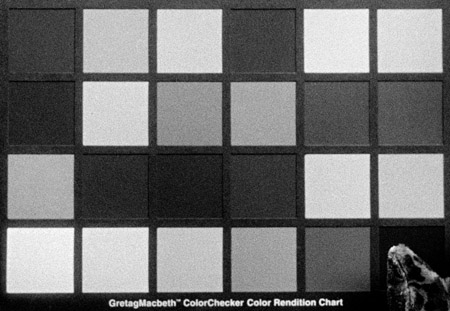
Here's a review of colorblind (left) and ortho (below).
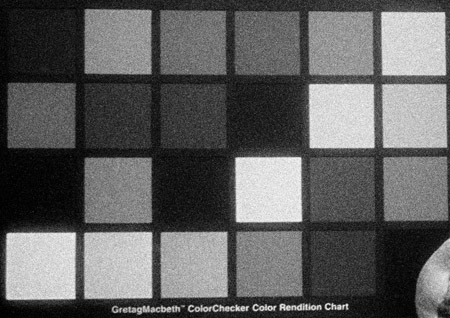
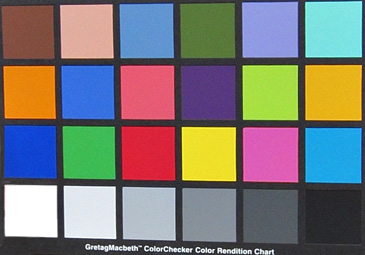
The only color that really misses the mark is the red, along with the pink and magenta. The only colors that suffer in comparison to colorblind emulsion are the two skin shade representations. Because of the red component of human fleshy parts, they record on the dark side. Vulcans would get a more accurate treatment (green blood — for all you non-Trekkies.)
Picking up yellow and green makes a big difference not just in the perception of reality, but also in how much of the actual information in a scene gets recorded.
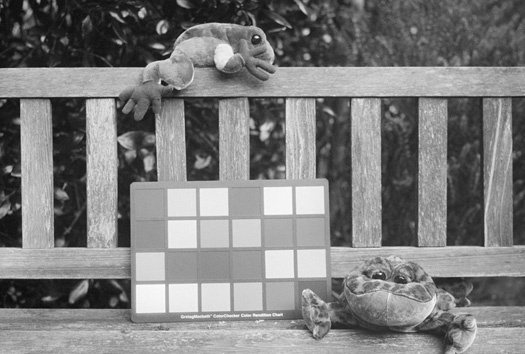
Here are the two scenes that the charts were cropped from. Again, colorblind on the left and ortho below.
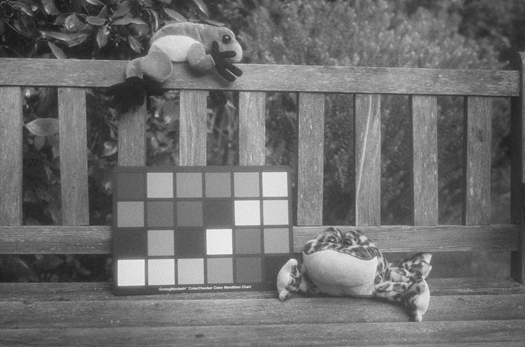
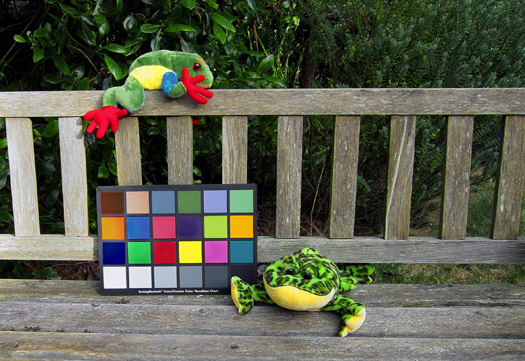
The ortho shot was re-staged after a rain scare. The sunshine I had for the colorblind shot was gone.
The values pretty much speak for themselves. (If I were printing for best appearance, I would of course burn in the charts.)
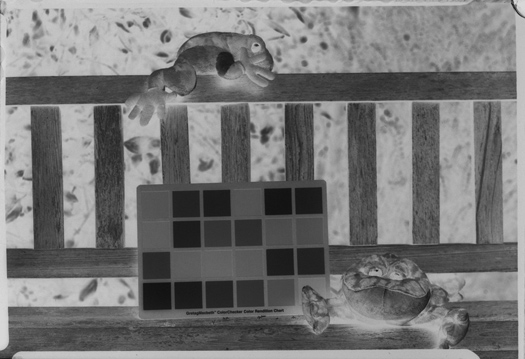
The two original negatives; straight scans.
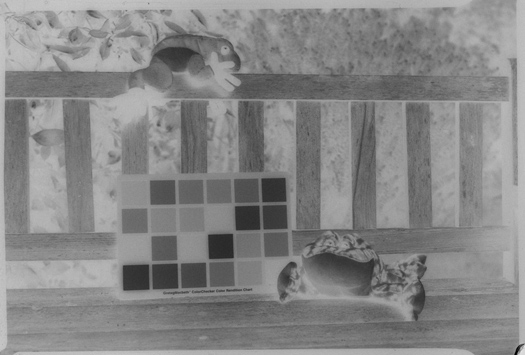
So, what does this mean beyond color charts and plush frogs?
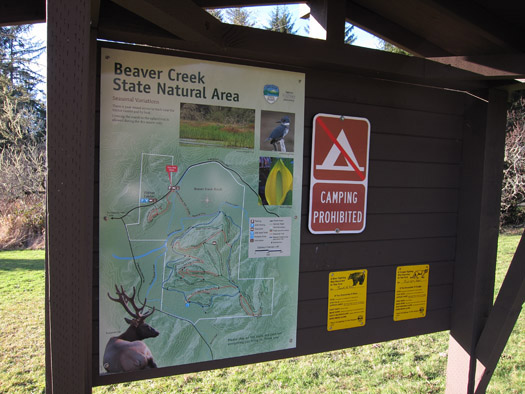
More information.
It looks like I'll be able to photograph skunk cabbages this Spring.
Colorblind, left. Ortho, right.


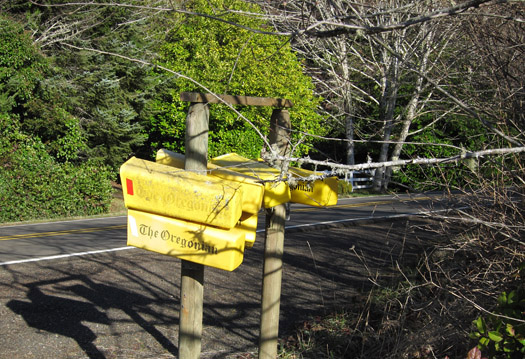
The differences here are more subtle than with the park signboard. There's a spruce tree with bluish candles across the road. The road has a yellow center line. Some of the yellow plastic tubes are in bright sunlight, some in shade.
I love the differences. In the ortho print, the yellow road line is visible. The shaded parts of the yellow tubes pick up luminosity. The sunlit parts don't show much difference because the bright light is reflecting the full spectrum off the shiny plastic. Also, note the classic darkening of the shadows from the yellow filter.
You can see, though, why there's a place for colorblind film in the camera bag. The trees across the road retain differentiation because the spruce records light and the tree with the yellowish leaves records very dark, giving the bright highlights more impact. In the ortho photograph, the trees all smudge together.
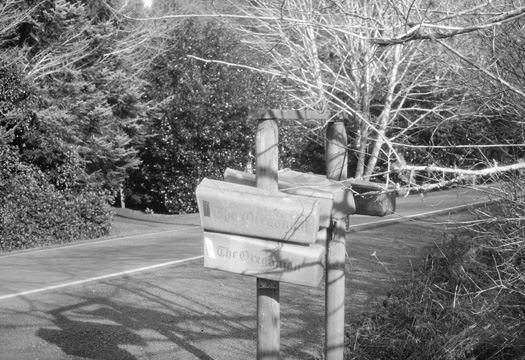
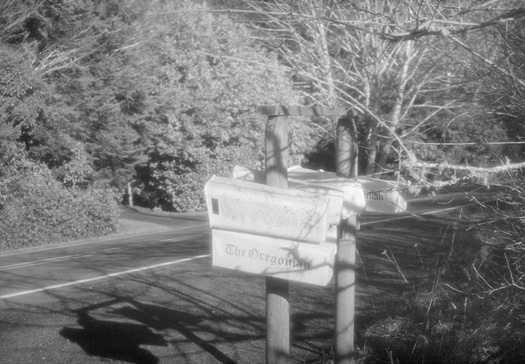
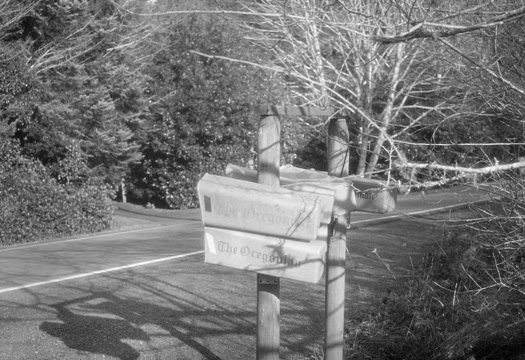
One last thing. The print on the left is from orthrochromatic emulsion, but exposed without a yellow filter. It pretty much splits the difference between colorblind and ortho with a medium yellow filter. This hints at a number of possible variables.
Continued...
